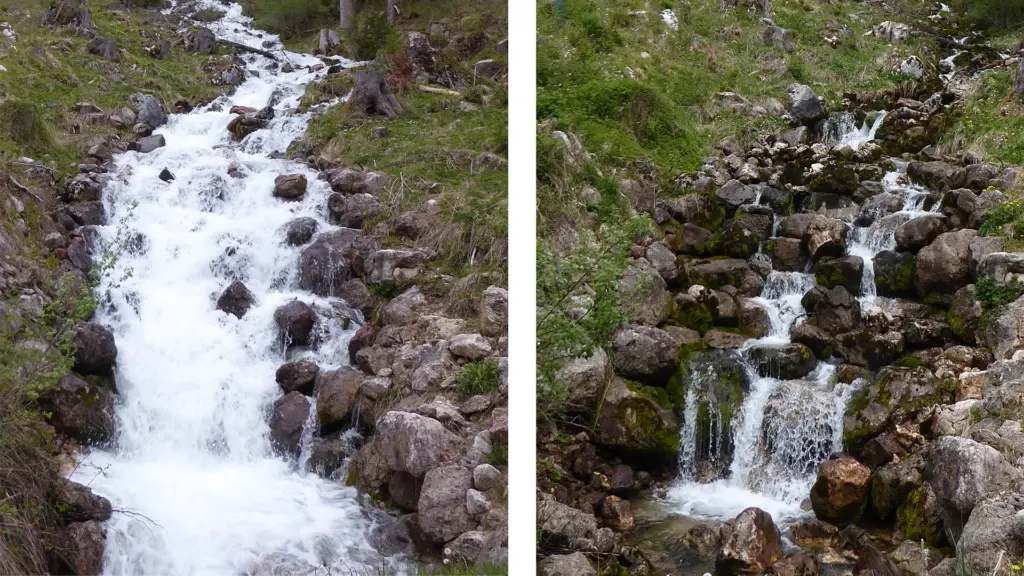The Eggenbach has many faces: Sometimes the streambed is dry and the spring seems to have stopped flowing, while on other days, many liters of water per second flow downstream.
What influences the stream’s discharge?
One important factor that affects the stream’s discharge is how much water infiltrates into the ground in its catchment area. Snowmelt in the upper Rofan Mountains, heavy storms, or days of continuous rain can cause the stream to swell. During dry periods or in winter, when precipitation falls only as snow and not as rain, the stream can remain dry for weeks at a time.
Generally, the stream carries the most water in early summer during snowmelt and heavy rainfall.

The images show the Eggenbach with varying discharge levels. The image on the right shows a typical discharge for the stream—several tens of liters per second. In contrast, the image on the left shows the Eggenbach carrying large volumes of water—hundreds of liters per second. Meltwater and rainwater from the catchment area cause the stream to swell. (Image source: own illustration)

